Co-Simulation of Smart Distribution Network Fault Management and Reconfiguration with LTE Communication
Abstract
:1. Introduction
1.1. Motivation
1.2. Literature Review on Simulation of Communication Systems for Smart Grids
- wide area monitoring and control (WAMC);
- optimization and control in distribution networks;
- integration of distributed generation.
1.3. Contributions of This Paper
2. Protection and Reconfiguration of Smart Distribution Networks
2.1. Smart Distribution Network Structure
- manage energy flows;
- contribute to voltage regulation;
- ensure fast reconfiguration after a failure;
- identify and pursue efficiency opportunities.
2.2. Fault Detection and Reconfiguration Scheme for Smart Distribution Networks
- (1)
- locate the fault (branch 4–5);
- (2)
- open the first circuit breaker upstream the fault (SSS 4) in order to extinguish the fault, providing selectivity (Figure 3b); the load at node 5 is unserved until network reconfiguration is completed.
- (3)
- Operate the emergency tie (5 and 6, in order to minimize the out of service area. Opening circuit breaker on node 5, on the side of the fault, guarantees that the second HV/MV substation does not feed the fault, and the fault is cleaned (Figure 3c).
- (4)
- Operate closing of circuit breaker on node 6 permits the reconfiguration of the network and restoring the service to the load at node 5.
2.3. LTE Communication Technology for Smart Grid Operation
- ability to inter-work with other radio technologies;
- high quality of service;
- data rate of 100 Mbps in motion and 1 Gbps with fixed installations;
- sharing of network resources, allowing multiple users per cell;
- scalable bandwidth from 1.4 to 20 MHz;
- packet switching IP networks;
- connection spectral efficiency of 15 bps/Hz in downlink and 6.75 bps/Hz in uplink;
- operating modes: frequency division duplex (FDD) and time division duplex (TDD).
- Use of licensed bands: Even though the use of licensed bands alone does not grant or prevent cyber attacks, the communication network is robust against cyber attacks and possible stealing of confidential data and permits a better handing of interferences if compared with technologies that operate on license-free bands.
- Mature and ubiquitous coverage: The communication network span over vast areas, thus permits to integrate even remote endpoints to the main power grid.
- High performance: High data rate, low latency, and high system reliability enable critical automation tasks within the distribution grid that are often associated with demanding QoS requirements, such as severe time constraints.
- Third-party operation: It relieves DSOs from having to run and maintain a dedicated communication infrastructure.
3. Case Study, Results and Discussion
3.1. Radial Network Operation
3.2. Meshed Network Operation
3.3. Backgroud Traffic Analysis
4. Conclusions
Author Contributions
Funding
Conflicts of Interest
References
- D’adamo, C.; Abbey, C.; Jupe, S.; Buchholz, B.; Khattabi, M.; Pilo, F. Development and operation of active distribution networks: Results of CIGRE C6.11 working group. In Proceedings of the 21st International Conference on Electricity Distribution, Frankfurt, Germany, 6–9 June 2011; Volume 6. [Google Scholar]
- Control and Automation Systems for Electricity Distribution Networks (EDN) of the Future. Available online: https://e-cigre.org/publication/711-control-and-automation-systems-for-electricity-distribution-networks-edn-of-the-future (accessed on 17 April 2018).
- Garau, M.; Celli, G.; Ghiani, E.; Soma, G.G.; Pilo, F.; Corti, S. ICT reliability modelling in co-simulation of smart distribution networks. In Proceedings of the 2015 IEEE 1st International Forum on Research and Technologies for Society and Industry Leveraging a Better Tomorrow (RTSI), Turin, Italy, 6–18 September 2015; pp. 365–370. [Google Scholar] [CrossRef]
- Kalalas, C.; Thrybom, L.; Alonso-Zarate, J. Cellular Communications for Smart Grid Neighborhood Area Networks: A Survey. IEEE Access 2016, 4, 1469–1493. [Google Scholar] [CrossRef]
- Garau, M.; Celli, G.; Ghiani, E.; Pilo, F.; Corti, S. Evaluation of Smart Grid Communication Technologies with a Co-Simulation Platform. IEEE Wirel. Commun. 2017, 24, 42–49. [Google Scholar] [CrossRef]
- Patel, A.; Aparicio, J.; Tas, N.; Loiacono, M.; Rosca, J. Assessing communications technology options for smart grid applications. In Proceedings of the 2011 IEEE International Conference on Smart Grid Communications (SmartGridComm), Brussels, Belgium, 17–20 October 2011; pp. 126–131. [Google Scholar] [CrossRef]
- Brown, J.; Khan, J.Y. Key performance aspects of an LTE FDD based Smart Grid communications network. Comput. Commun. 2013, 36, 551–561. [Google Scholar] [CrossRef]
- Markkula, J.; Haapola, J. Impact of smart grid traffic peak loads on shared LTE network performance. In Proceedings of the 2013 IEEE International Conference on Communications (ICC), Budapest, Hungary, 9–13 June 2013; pp. 4046–4051. [Google Scholar] [CrossRef]
- Cheng, P.; Wang, L.; Zhen, B.; Wang, S. Feasibility study of applying LTE to Smart Grid. In Proceedings of the 2011 IEEE First International Workshop on Smart Grid Modeling and Simulation (SGMS), Brussels, Belgium, 17 October 2011; pp. 108–113. [Google Scholar] [CrossRef]
- Andrén, F.P.; Strasser, T.I.; Kastner, W. Engineering Smart Grids: Applying Model-Driven Development from Use Case Design to Deployment. Energies 2017, 10, 374. [Google Scholar] [CrossRef]
- Stifter, M.; Kazmi, J.H.; Andrén, F.; Strasser, T. Co-simulation of power systems, communication and controls. In Proceedings of the 2014 Workshop on Modeling and Simulation of Cyber-Physical Energy Systems (MSCPES), Berlin, Germany, 14 April 2014; pp. 1–6. [Google Scholar] [CrossRef]
- Li, W.; Ferdowsi, M.; Stevic, M.; Monti, A.; Ponci, F. Cosimulation for Smart Grid Communications. IEEE Trans. Ind. Inform. 2014, 10, 2374–2384. [Google Scholar] [CrossRef]
- Hopkinson, K.; Wang, X.; Giovanini, R.; Thorp, J.; Birman, K.; Coury, D. EPOCHS: A platform for agent-based electric power and communication simulation built from commercial off-the-shelf components. IEEE Trans. Power Syst. 2006, 21, 548–558. [Google Scholar] [CrossRef]
- Lin, H.; Veda, S.S.; Shukla, S.S.; Mili, L.; Thorp, J. GECO: Global Event-Driven Co-Simulation Framework for Interconnected Power System and Communication Network. IEEE Trans. Smart Grid 2012, 3, 1444–1456. [Google Scholar] [CrossRef]
- Mets, K.; Verschueren, T.; Develder, C.; Vandoorn, T.L.; Vandevelde, L. Integrated simulation of power and communication networks for smart grid applications. In Proceedings of the 2011 IEEE 16th International Workshop on Computer Aided Modeling and Design of Communication Links and Networks (CAMAD), Kyoto, Japan, 10–11 June 2011; pp. 61–65. [Google Scholar] [CrossRef]
- Cintuglu, M.H.; Ma, T.; Mohammed, O. Protection of Autonomous Microgrids using Agent-Based Distributed Communication. IEEE Trans. Power Deliv. 2016, 32, 351–360. [Google Scholar] [CrossRef]
- Mueller, S.C.; Georg, H.; Nutaro, J.J.; Widl, E.; Deng, Y.; Palensky, P.; Awais, M.U.; Chenine, M.; Kuch, M.; Stifter, M.; et al. Interfacing Power System and ICT Simulators: Challenges, State-of-the-Art, and Case Studies. IEEE Trans. Smart Grid 2016, 9, 14–24. [Google Scholar] [CrossRef]
- Palensky, P.; van der Meer, A.A.; Lopez, C.D.; Joseph, A.; Pan, K. Applied Cosimulation of intelligent power systems: Implementation, usage, and examples. IEEE Ind. Electron. Mag. 2017, 11, 6–21. [Google Scholar] [CrossRef]
- Kazmi, J.H.; Latif, A.; Ahmad, I.; Palensky, P.; Gawlik, W. A flexible smart grid co-simulation environment for cyber-physical interdependence analysis. In Proceedings of the 2016 Workshop on Modeling and Simulation of Cyber-Physical Energy Systems (MSCPES), Vienna, Austria, 11 April 2016; pp. 1–6. [Google Scholar] [CrossRef]
- Bottura, R.; Babazadeh, D.; Zhu, K.; Borghetti, A.; Nordström, L.; Nucci, C.A. SITL and HLA Co-simulation Platforms: Tools forAnalysis of the Integrated ICT and Electric Power System. In Proceedings of the 2013 IEEE EUROCON, Zagreb, Croatia, 1–4 July 2013. [Google Scholar]
- Ahmad, I.; Kazmi, J.H.; Shahzad, M.; Palensky, P.; Gawlik, W. Co-simulation framework based on power system, AI and communication tools for evaluating smart grid applications. In Proceedings of the 2015 IEEE Innovative Smart Grid Technologies—Asia (ISGT ASIA), Bangkok, Thailand, 3–6 November 2015; pp. 1–6. [Google Scholar] [CrossRef]
- Moulema, P.; Yu, W.; Griffith, D.; Golmie, N. On Effectiveness of Smart Grid Applications Using Co-Simulation. In Proceedings of the 2015 24th International Conference on Computer Communication and Networks (ICCCN), Las Vegas, NV, USA, 3–6 August 2015; pp. 1–8. [Google Scholar] [CrossRef]
- Sadi, M.A.H.; Ali, M.H.; Dasgupta, D.; Abercrombie, R.K.; Kher, S. Co-Simulation Platform for Characterizing Cyber Attacks in Cyber Physical Systems. In Proceedings of the 2015 IEEE Symposium Series on Computational Intelligence, Cape Town, South Africa, 7–10 December 2015; pp. 1244–1251. [Google Scholar] [CrossRef]
- Sadi, M.A.H.; Ali, M.H.; Dasgupta, D.; Abercrombie, R.K. OPNET/Simulink Based Testbed for Disturbance Detection in the Smart Grid. In Proceedings of the 10th Annual Cyber and Information Security Research Conference, CISR ’15, Oak Ridge, TN, USA, 7–9 April 2015; ACM: New York, NY, USA, 2015; pp. 17:1–17:4. [Google Scholar] [CrossRef]
- Dong, X.; Lin, H.; Tan, R.; Iyer, R.K.; Kalbarczyk, Z. Software-Defined Networking for Smart Grid Resilience: Opportunities and Challenges. In Proceedings of the 1st ACM Workshop on Cyber-Physical System Security, Denver, CO, USA, 12–16 October 2015; ACM: New York, NY, USA, 2015; pp. 61–68. [Google Scholar] [CrossRef]
- Venkataramanan, V.; Srivastava, A.; Hahn, A. Real-time co-simulation testbed for microgrid cyber-physical analysis. In Proceedings of the 2016 Workshop on Modeling and Simulation of Cyber-Physical Energy Systems (MSCPES), Vienna, Austria, 11 April 2016; pp. 1–6. [Google Scholar] [CrossRef]
- Virdis, A.; Stea, G.; Nardini, G. Simulating LTE/LTE-Advanced Networks with SimuLTE. In Simulation and Modeling Methodologies, Technologies and Applications; Springer: Cham, Switzerland, 2015; pp. 83–105. [Google Scholar]
- Alvarez de Sotomayor, A.; Della Giustina, D.; Massa, G.; Dedè, A.; Ramos, F.; Barbato, A. IEC 61850-based adaptive protection system for the MV distribution smart grid. Sustain. Energy Grids Netw. 2017. [Google Scholar] [CrossRef]
- Dedè, A.; Giustina, D.D.; Massa, G.; Cremaschini, L. Toward a New Standard for Secondary Substations: The Viewpoint of a Distribution Utility. IEEE Trans. Power Deliv. 2017, 32, 1123–1132. [Google Scholar] [CrossRef]
- Coppo, M.; Pelacchi, P.; Pilo, F.; Pisano, G.; Soma, G.G.; Turri, R. The Italian smart grid pilot projects: Selection and assessment of the test beds for the regulation of smart electricity distribution. Electr. Power Syst. Res. 2015, 120, 136–149. [Google Scholar] [CrossRef]
- Botton, S.; Cavalletto, L.; Marmeggi, F. Schema project-innovative criteria for management and operation of a closed ring MV network. In Proceedings of the 22nd International Conference and Exhibition on Electricity Distribution (CIRED 2013), Stockholm, Sweden, 10–13 June 2013; pp. 1–4. [Google Scholar] [CrossRef]
- Wolter, D.; Zdrallek, M.; Stötzel, M.; Schacherer, C.; Mladenovic, I.; Biller, M. Impact of meshed grid topologies on distribution grid planning and operation. CIRED-Open Access Proc. J. 2017, 2017, 2338–2341. [Google Scholar] [CrossRef]
- Hadjsaid, N.; Alvarez-Hérault, M.C.; Caire, R.; Raison, B.; Descloux, J.; Bienia, W. Novel architectures and operation modes of distribution network to increase DG integration. In Proceedings of the IEEE PES General Meeting, Providence, RI, USA, 25–29 July 2010; pp. 1–6. [Google Scholar] [CrossRef]
- Celli, G.; Pilo, F.; Pisano, G.; Allegranza, V.; Cicoria, R.; Iaria, A. Meshed vs. radial MV distribution network in presence of large amount of DG. In Proceedings of the IEEE PES Power Systems Conference and Exposition, New York, NY, USA, 10–13 October 2004; Volume 2, pp. 709–714. [Google Scholar] [CrossRef]
- Jiang, J.; Qian, Y. Distributed Communication Architecture for Smart Grid Applications. IEEE Commun. Mag. 2016, 54, 60–67. [Google Scholar] [CrossRef]
- Matos, M.A.; Seca, L.; Madureira, A.G.; Soares, F.J.; Bessa, R.J.; Pereira, J.; Peças Lopes, J. Control and Management Architectures. In Smart Grid Handbook; John Wiley & Sons, Ltd.: Hoboken, NJ, USA, 2016; ISBN 978-1-118-75547-1. [Google Scholar]
- D’adamo, C.; Valtorta, G.; Consiglio, L.; Cerretti, A.; D’orazio, L.; Malerba, A.; Marmeggi, F. Smart fault selection: New operational criteria and challenges for the large-scale deployment in e-distribuzione’s network. CIRED-Open Access Proc. J. 2017, 2017, 1475–1478. [Google Scholar] [CrossRef]
- Korowajczuk, L. LTE, WiMAX and WLAN Network Design, Optimization and Performance Analysis, 1st ed.; Korowajczuk, L., Ed.; Wiley: Chichester, UK, 2011; ISBN 978-0-470-74149-8. [Google Scholar]
- Aeegsi, A. per l’Energia E., il Gas ed il Sistema Idrico. Testo Integrato Della Regolazione Della Qualità Dei Servizi di Distribuzione e Misura Dell’energia Elettrica. 2014. Available online: https://www.autorita.energia.it/allegati/docs/11/198-11argtiqe_new.pdf (accessed on 18 May 2018).
- Auer, G.; Giannini, V.; Desset, C.; Godor, I.; Skillermark, P.; Olsson, M.; Imran, M.A.; Sabella, D.; Gonzalez, M.J.; Blume, O.; et al. How much energy is needed to run a wireless network? IEEE Wirel. Commun. 2011, 18, 40–49. [Google Scholar] [CrossRef]
- Saxena, N.; Roy, A.; Kim, H. Efficient 5G Small Cell Planning With eMBMS for Optimal Demand Response in Smart Grids. IEEE Trans. Ind. Inform. 2017, 13, 1471–1481. [Google Scholar] [CrossRef]
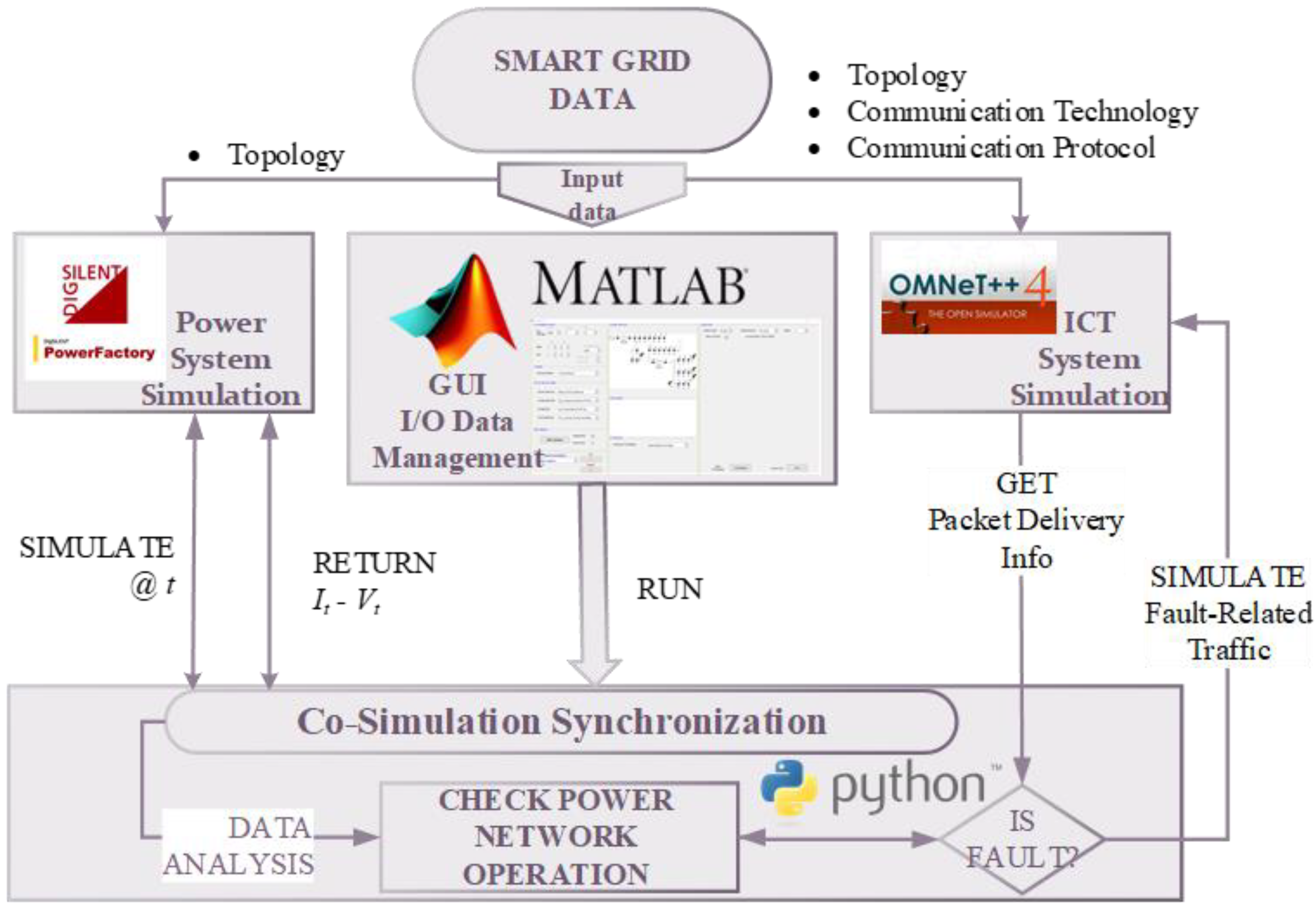
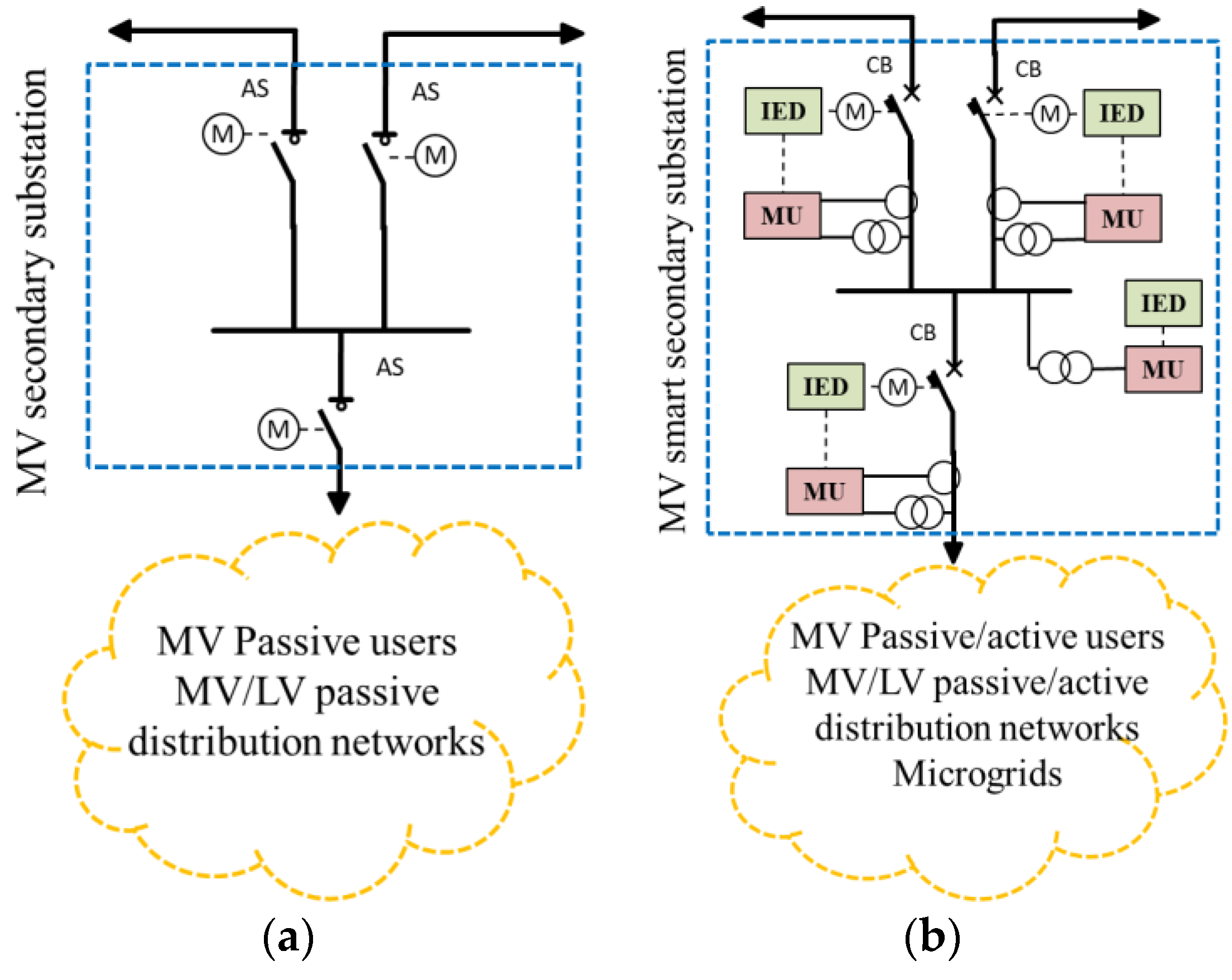
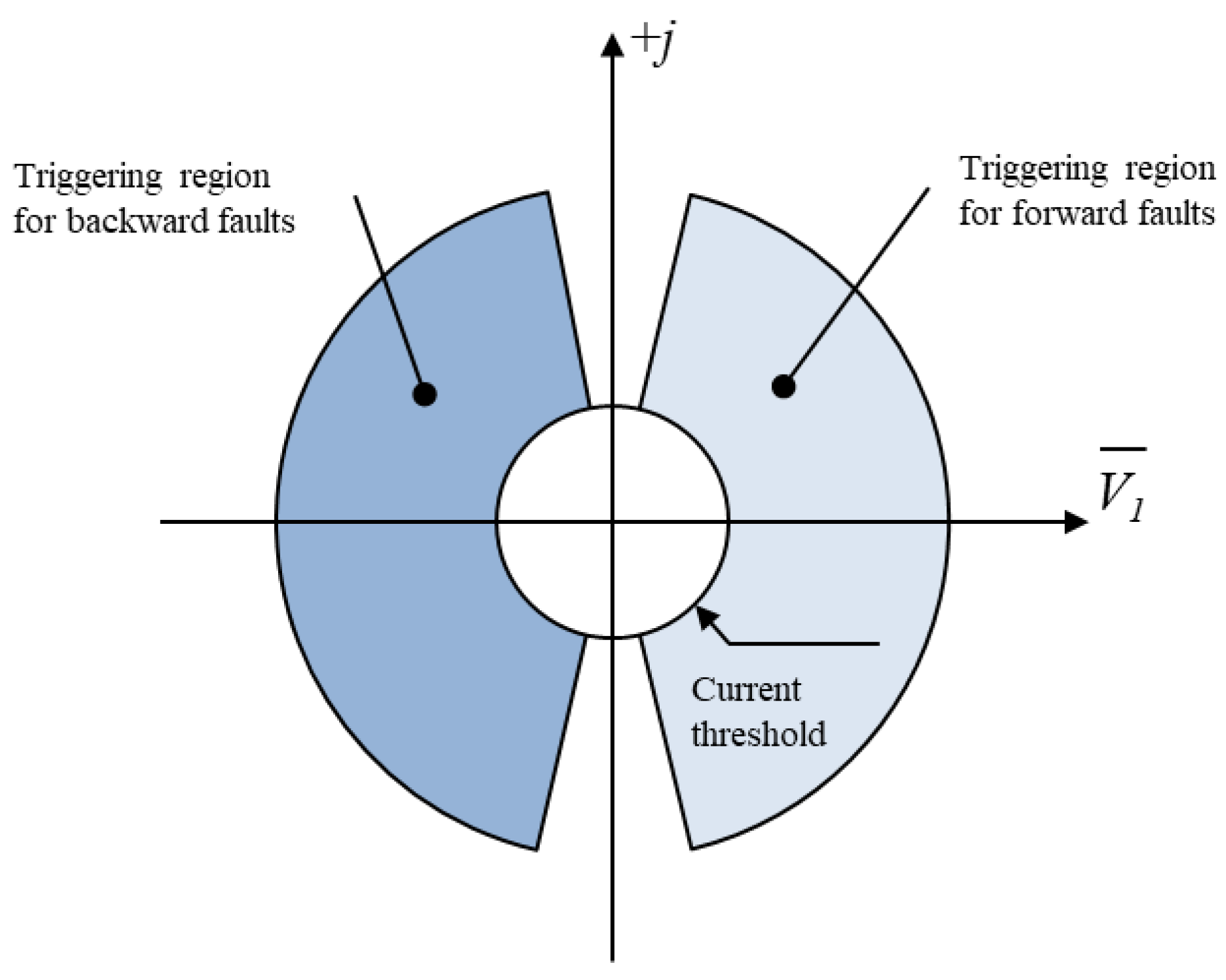
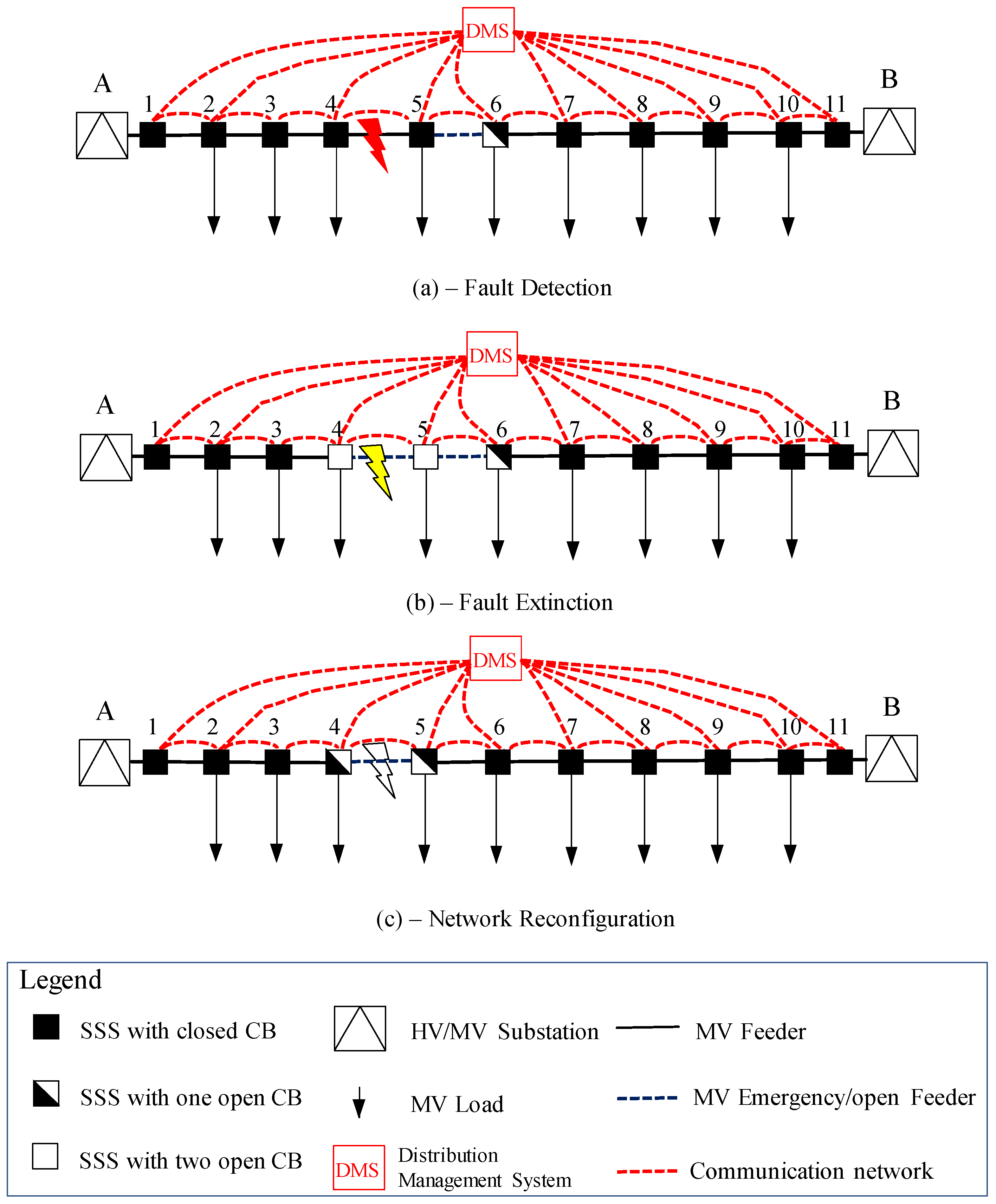
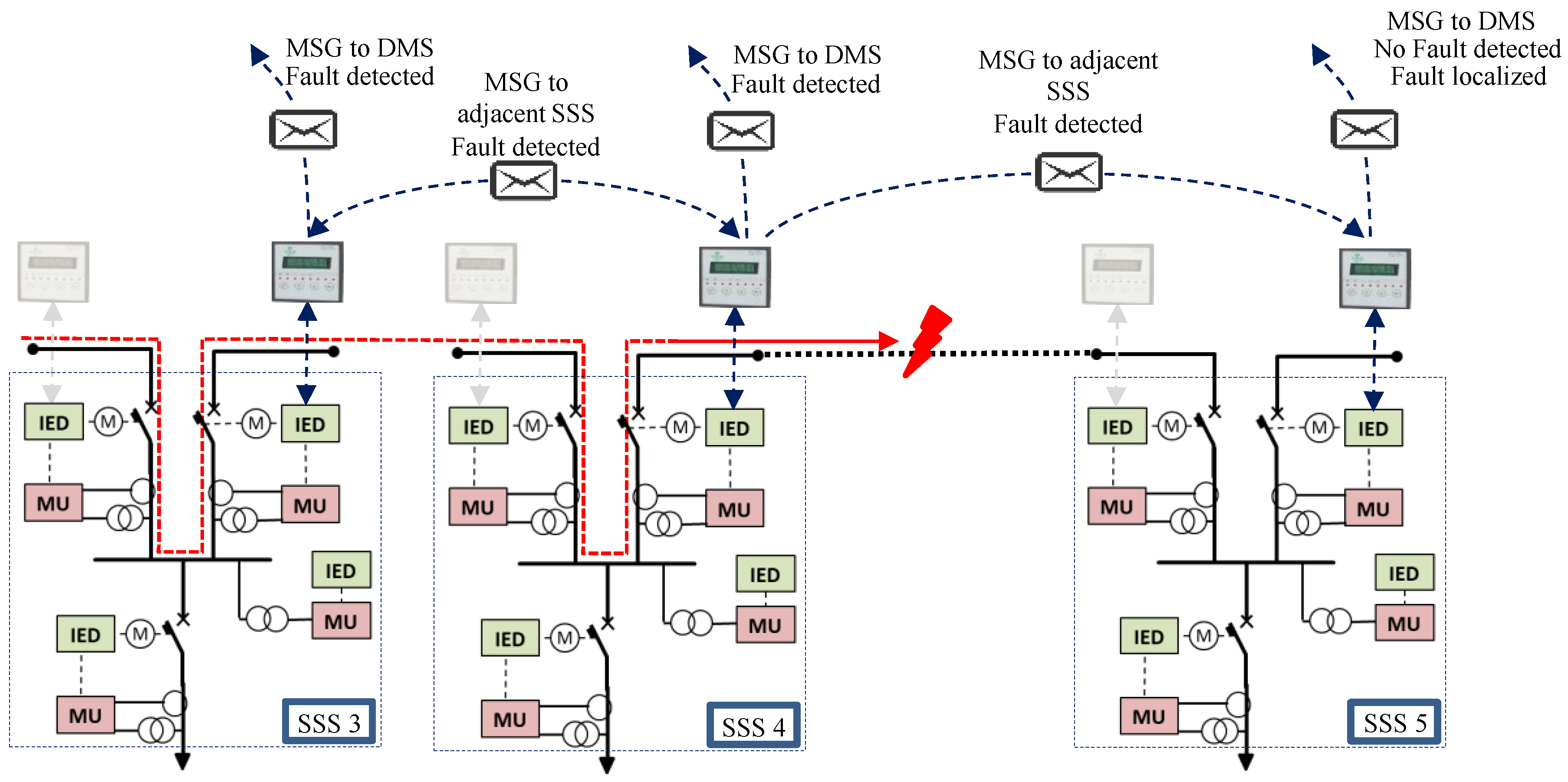
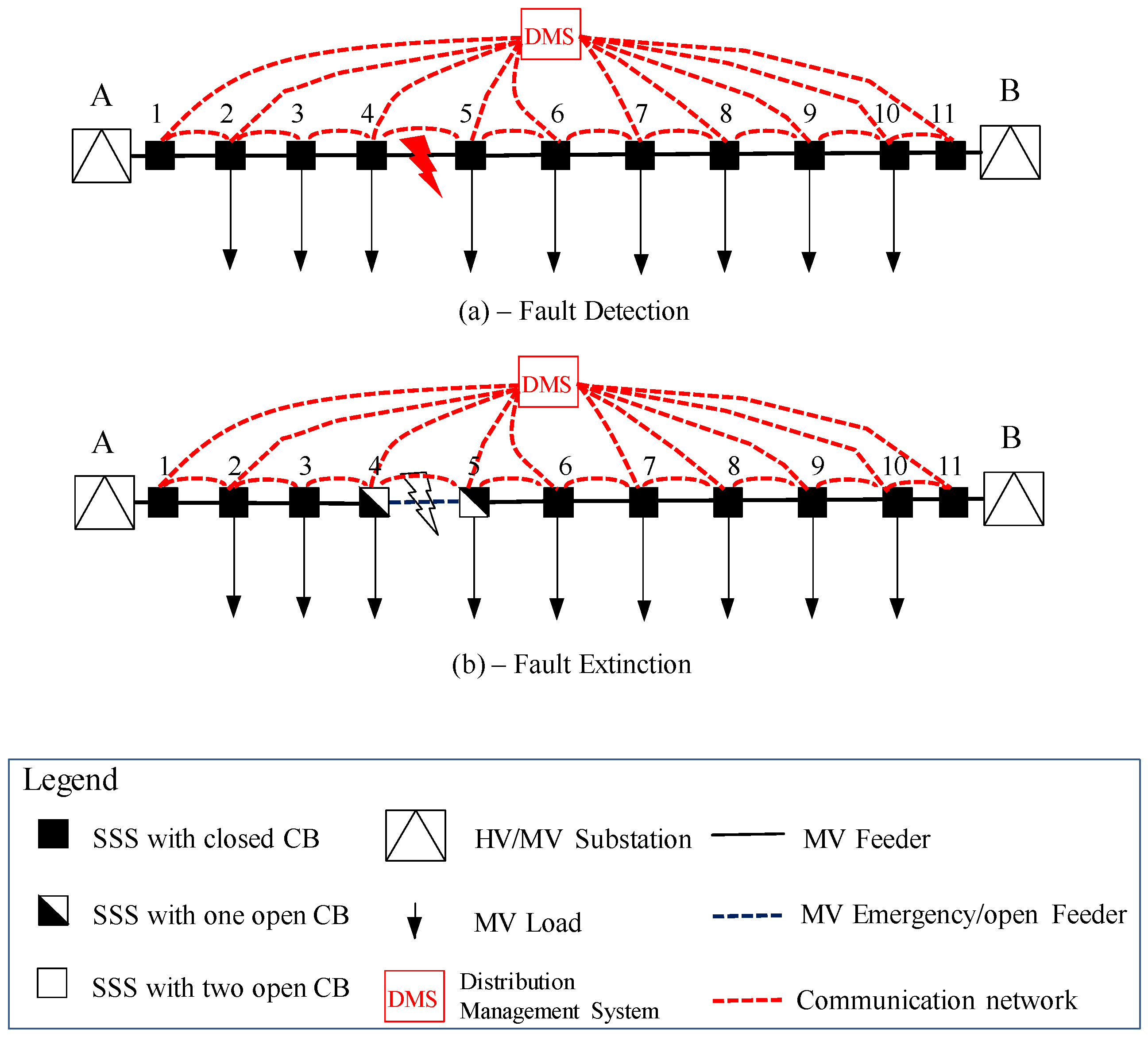
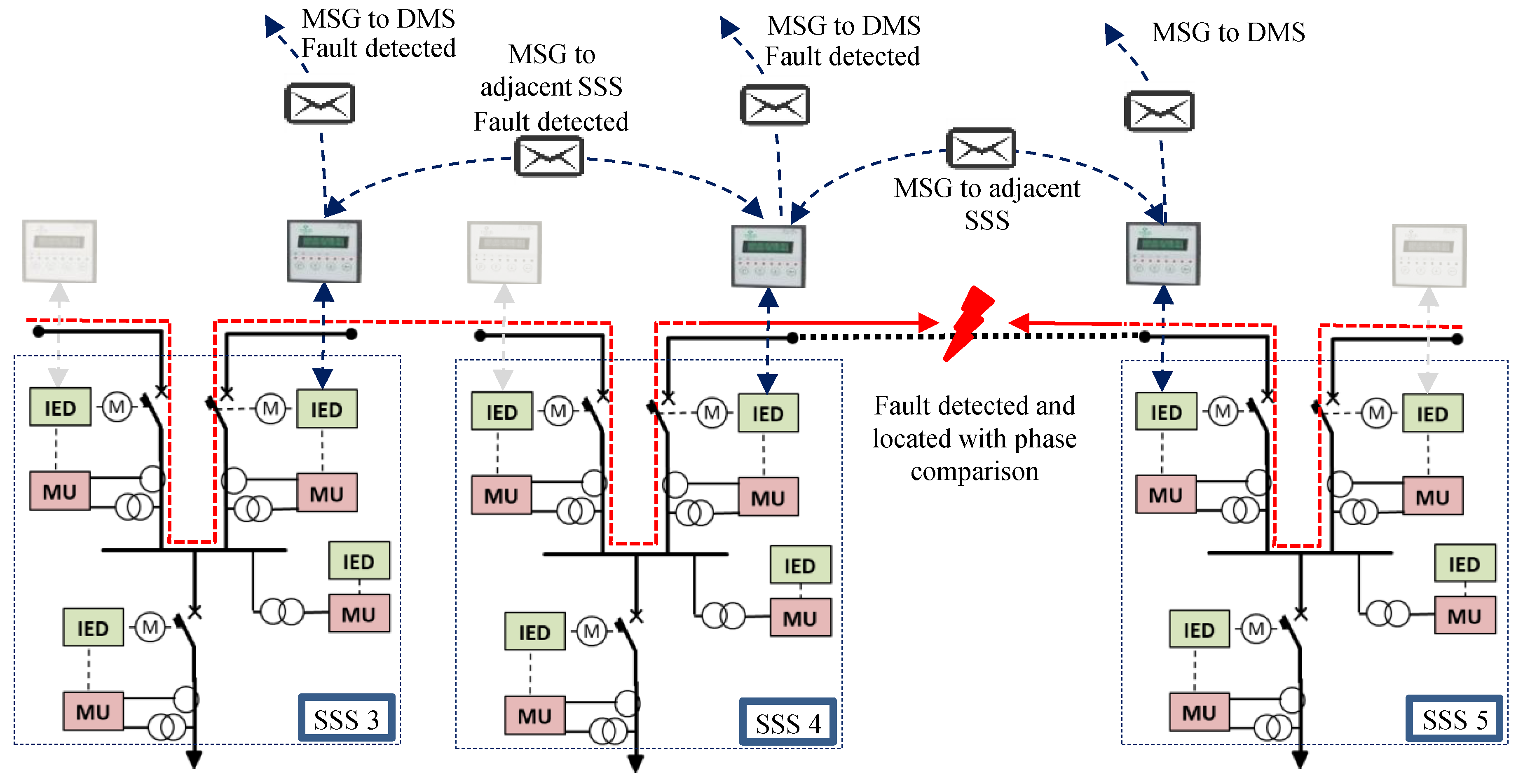
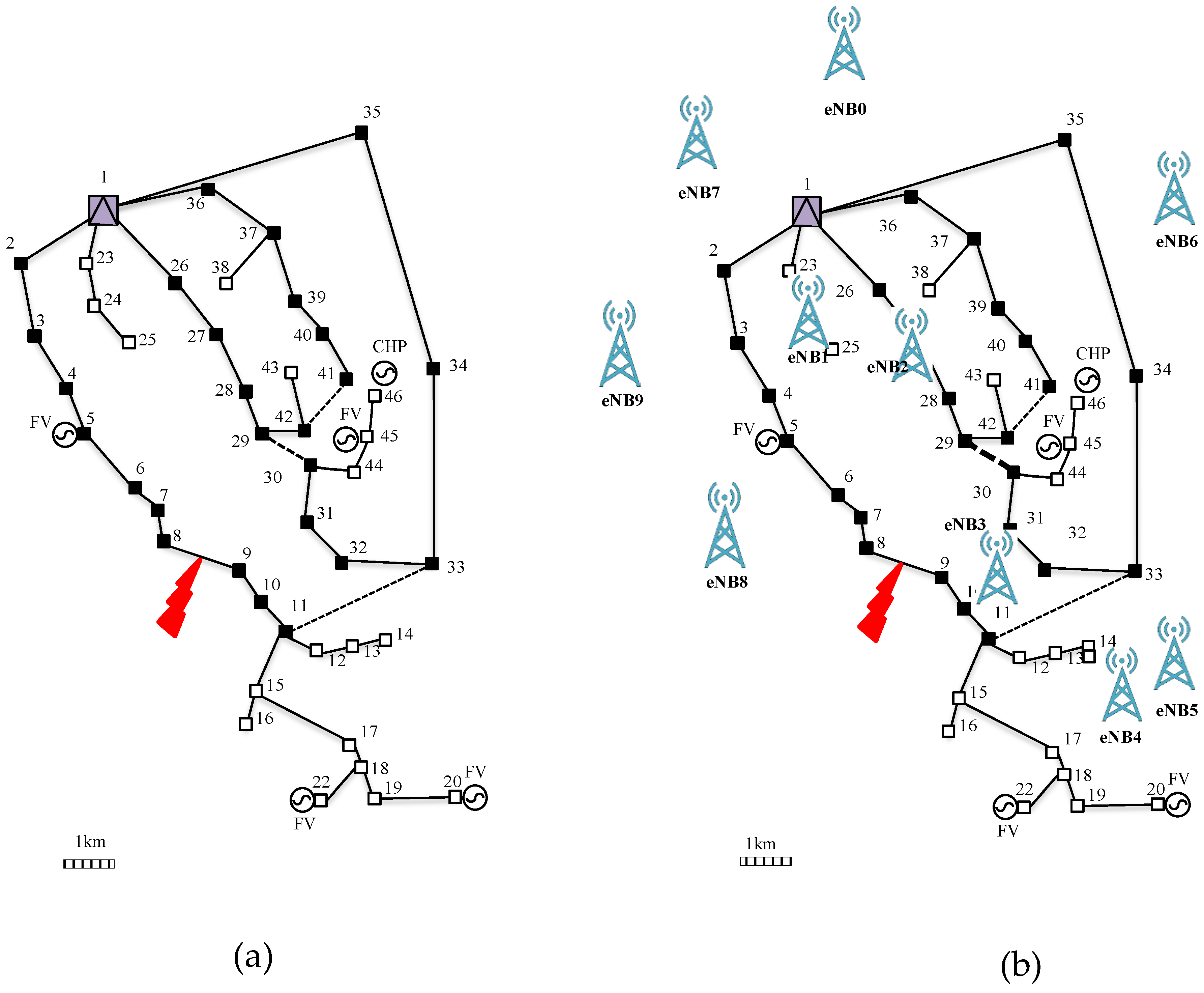
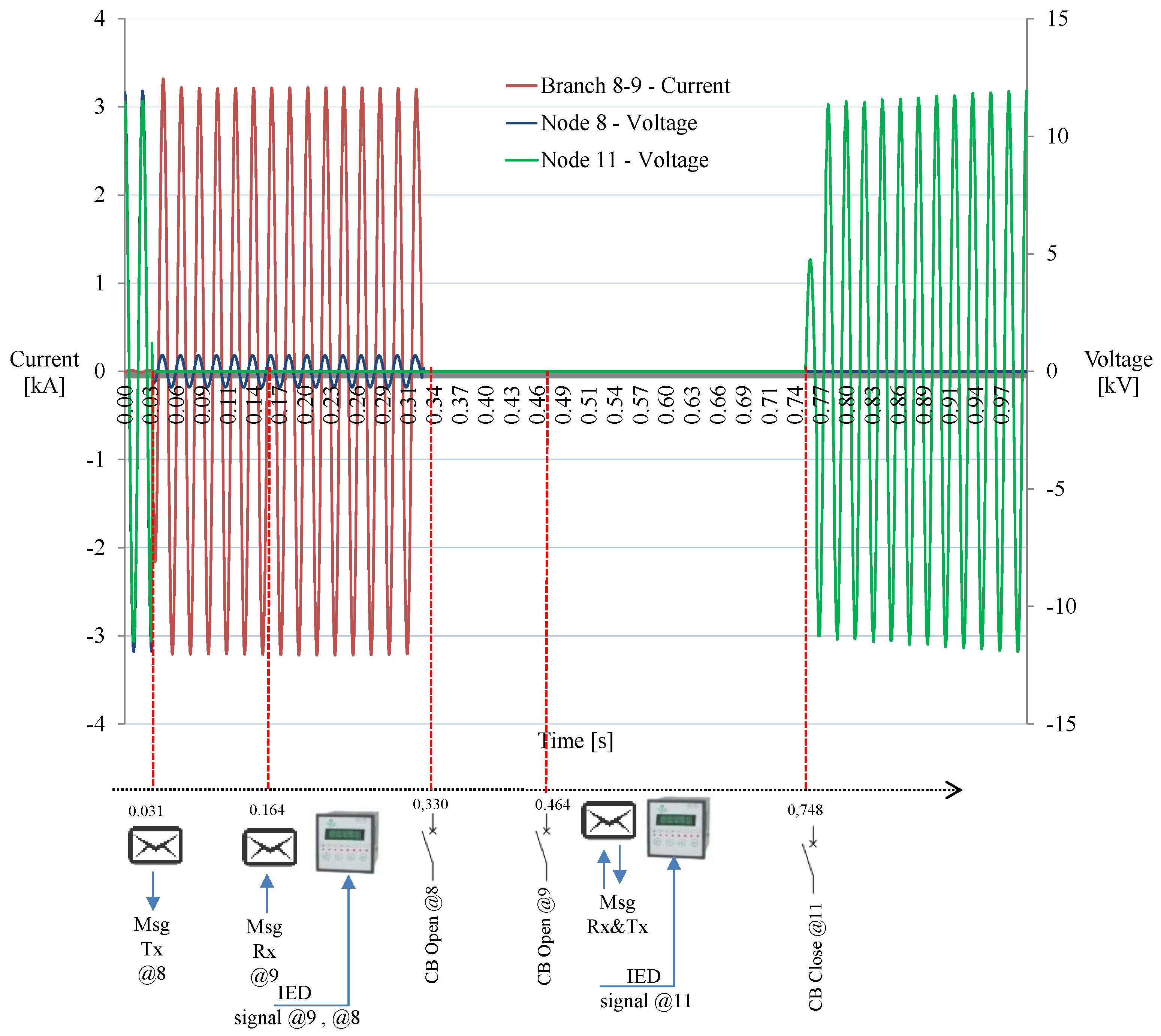
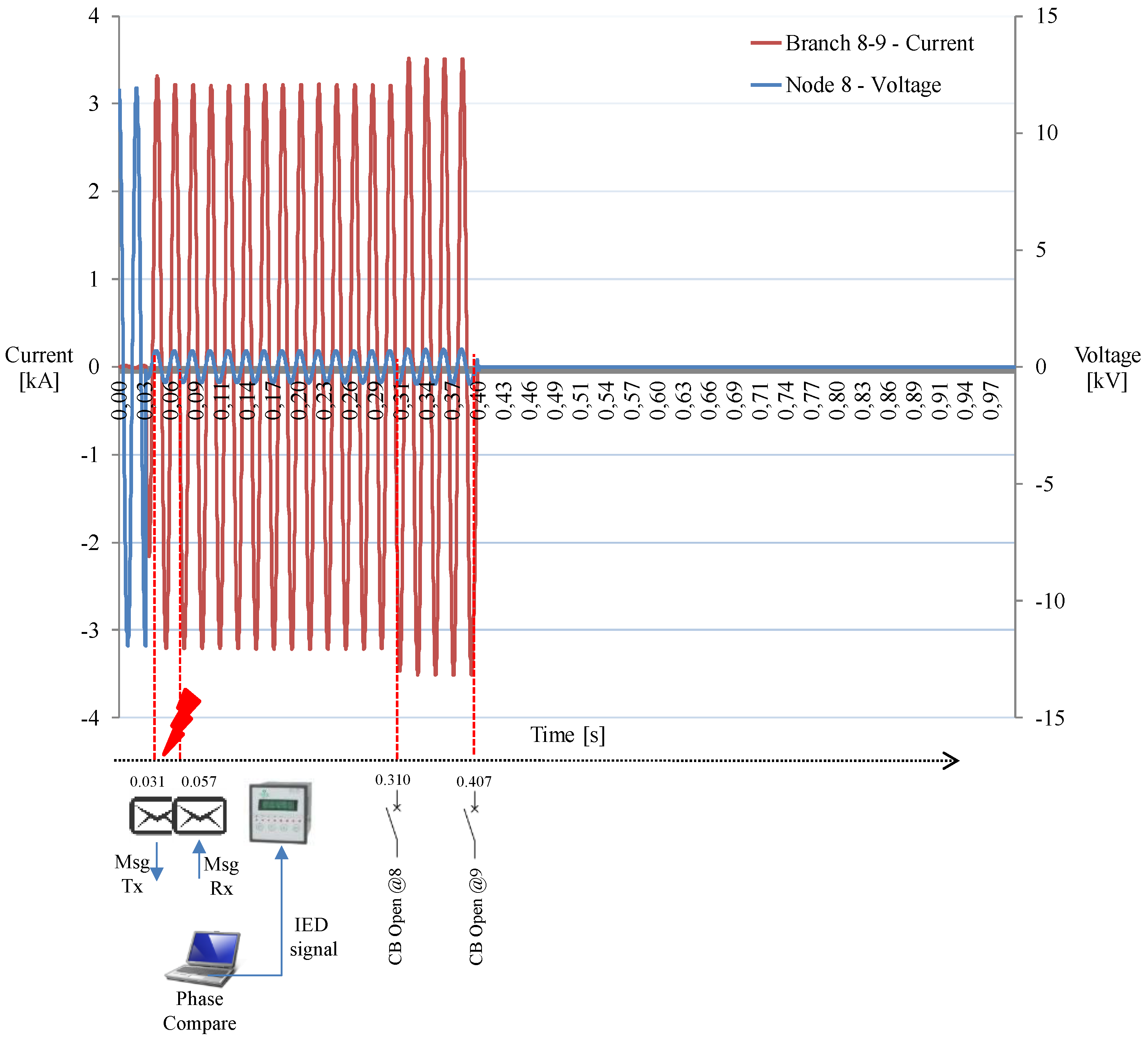
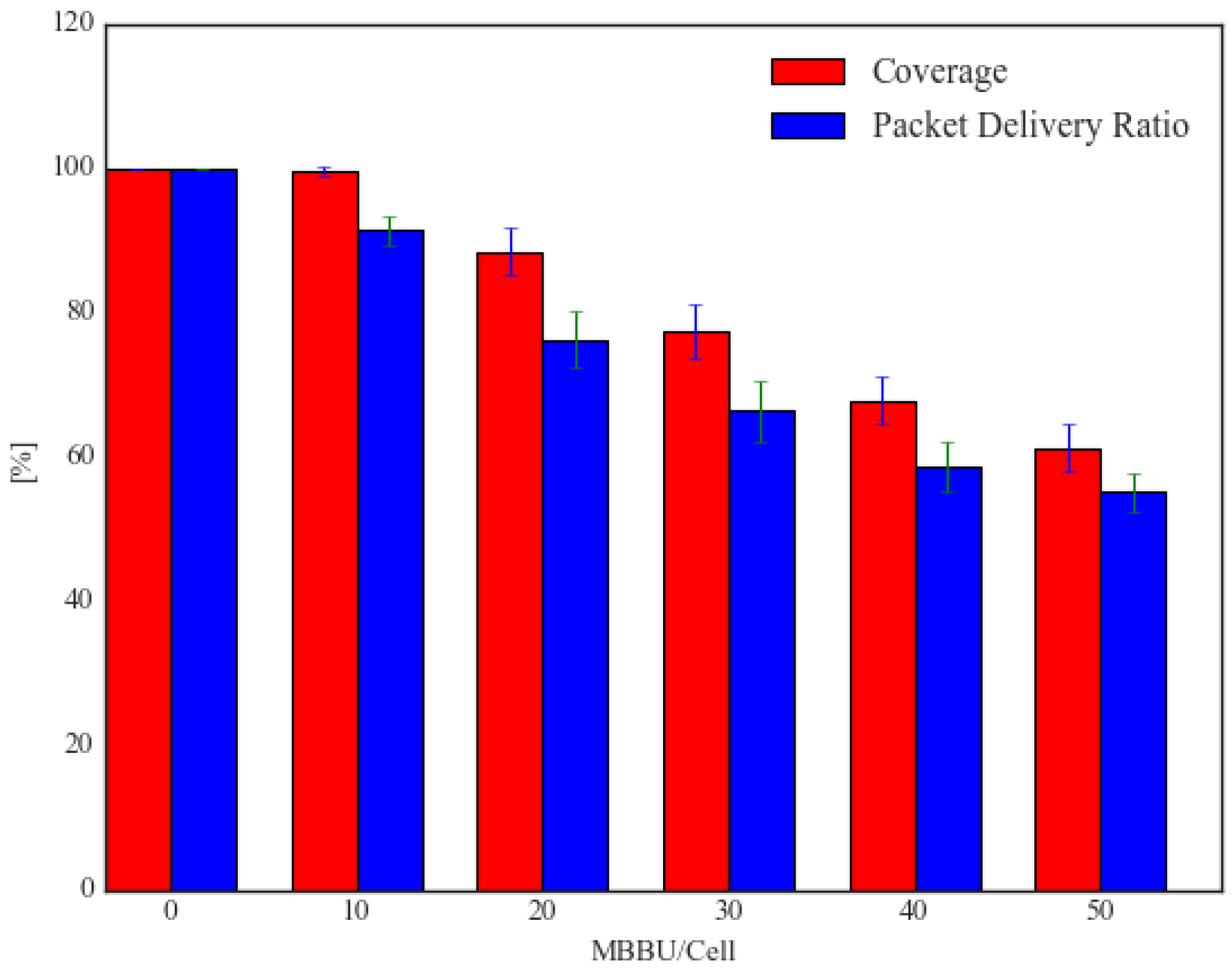
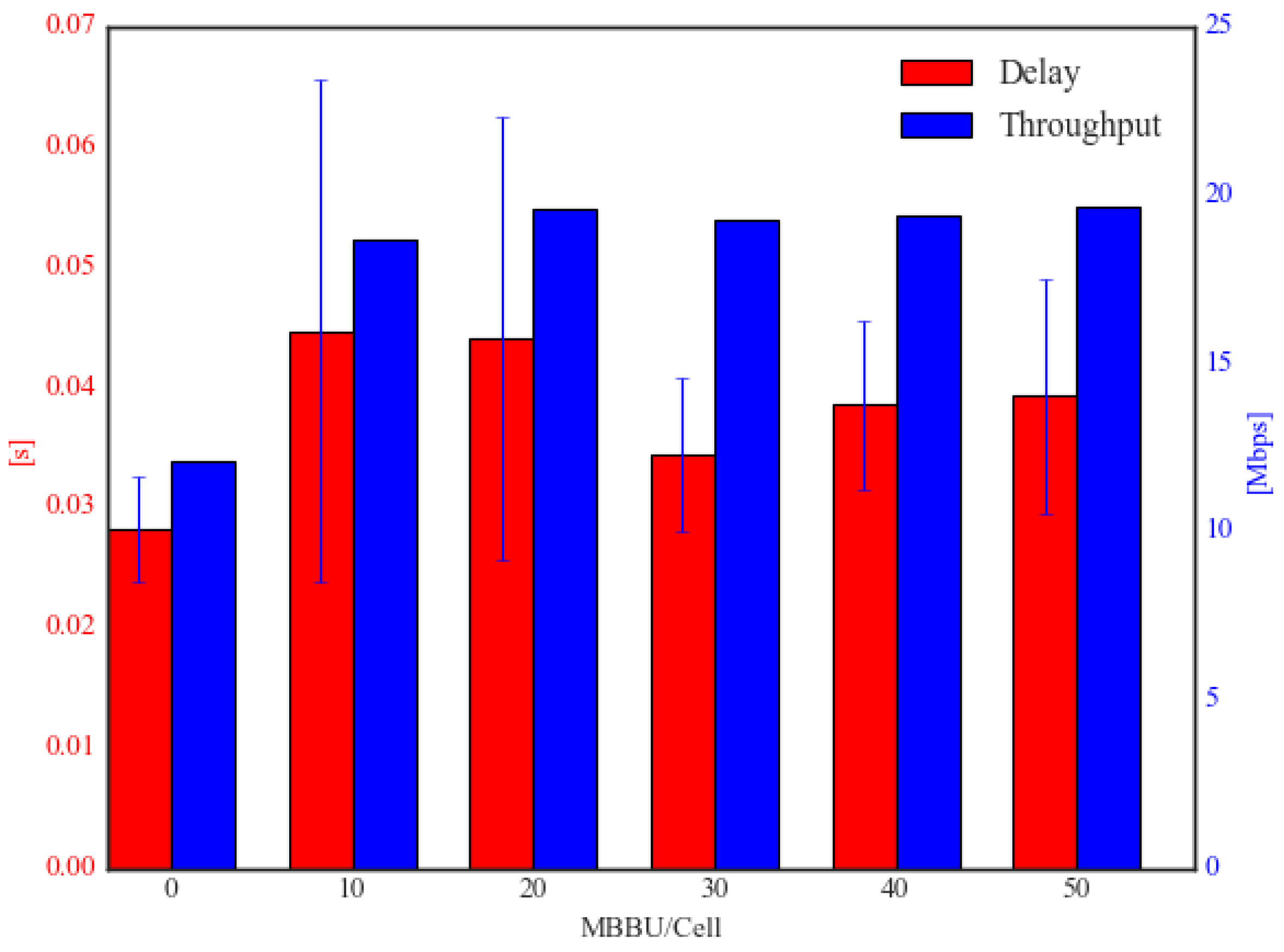
| LTE Related Parameter | Value |
|---|---|
| 3GPP standard version | Release 10 |
| Channel model (ITU scenario) | Urban Macrocell |
| Carrier Frequency | 1800 MHz |
| Channel Bandwidth | 20 MHz |
| Antenna Gain e-NodeB | 18 dBm |
| Thermal Noise | −101 dBm |
| UE Noise Figure | 2 dBm |
| e-NodeB Noise Figure | 5 dBm |
| Packet Size | 216 B |
| Protocol | UDP |
| Current [kA] | Phase [rad] | |
|---|---|---|
| Infeed | 1.772 | 2.920 (cosϕ = −0.976) |
| Outfeed | −1.786 | 0.220 (cosϕ = 0.976) |
| Time Rx [ms] | Current [kA] | Phase [rad] | |
|---|---|---|---|
| Preceding SSS (node 8) | 56 | −1.057 | 0.077 (cosϕ = 0.997) |
| Following SSS (node 10) | 57 | −1.433 | 0.259 (cosϕ = 0.967) |
© 2018 by the authors. Licensee MDPI, Basel, Switzerland. This article is an open access article distributed under the terms and conditions of the Creative Commons Attribution (CC BY) license (http://creativecommons.org/licenses/by/4.0/).
Share and Cite
Garau, M.; Ghiani, E.; Celli, G.; Pilo, F.; Corti, S. Co-Simulation of Smart Distribution Network Fault Management and Reconfiguration with LTE Communication. Energies 2018, 11, 1332. https://doi.org/10.3390/en11061332
Garau M, Ghiani E, Celli G, Pilo F, Corti S. Co-Simulation of Smart Distribution Network Fault Management and Reconfiguration with LTE Communication. Energies. 2018; 11(6):1332. https://doi.org/10.3390/en11061332
Chicago/Turabian StyleGarau, Michele, Emilio Ghiani, Gianni Celli, Fabrizio Pilo, and Sergio Corti. 2018. "Co-Simulation of Smart Distribution Network Fault Management and Reconfiguration with LTE Communication" Energies 11, no. 6: 1332. https://doi.org/10.3390/en11061332
APA StyleGarau, M., Ghiani, E., Celli, G., Pilo, F., & Corti, S. (2018). Co-Simulation of Smart Distribution Network Fault Management and Reconfiguration with LTE Communication. Energies, 11(6), 1332. https://doi.org/10.3390/en11061332






